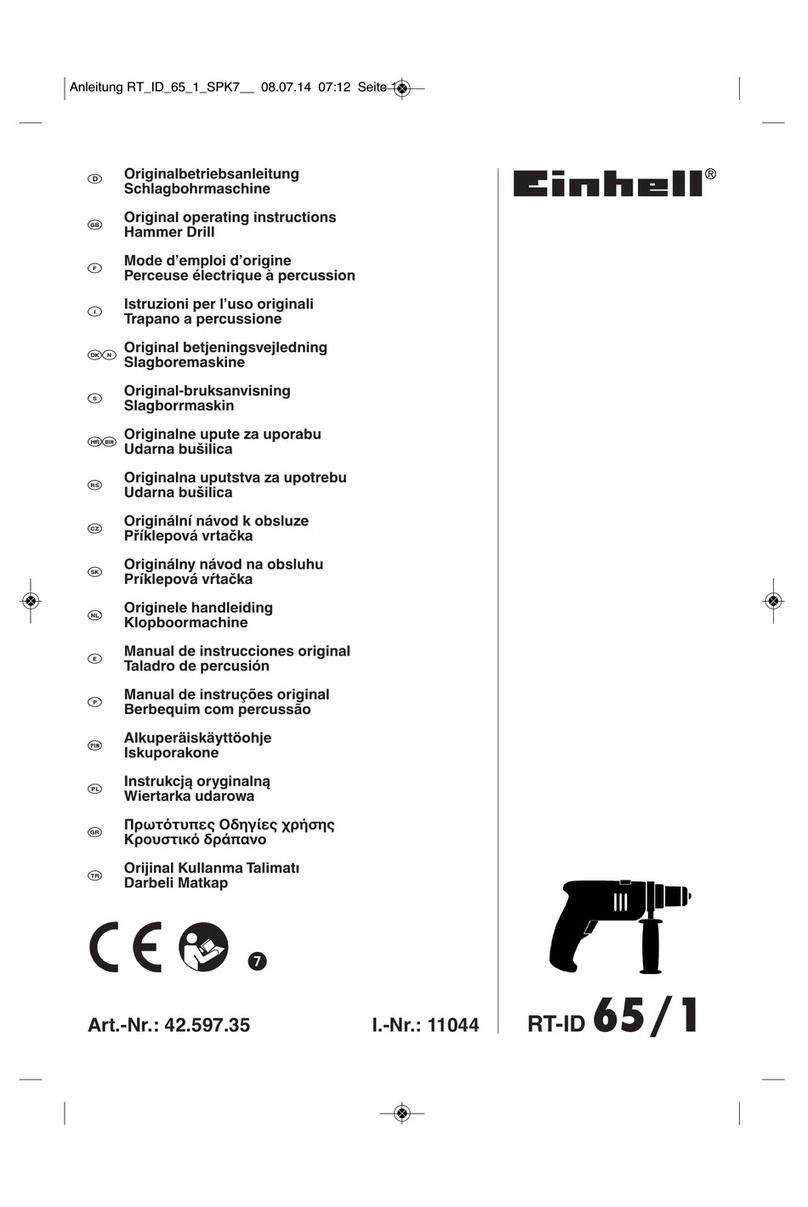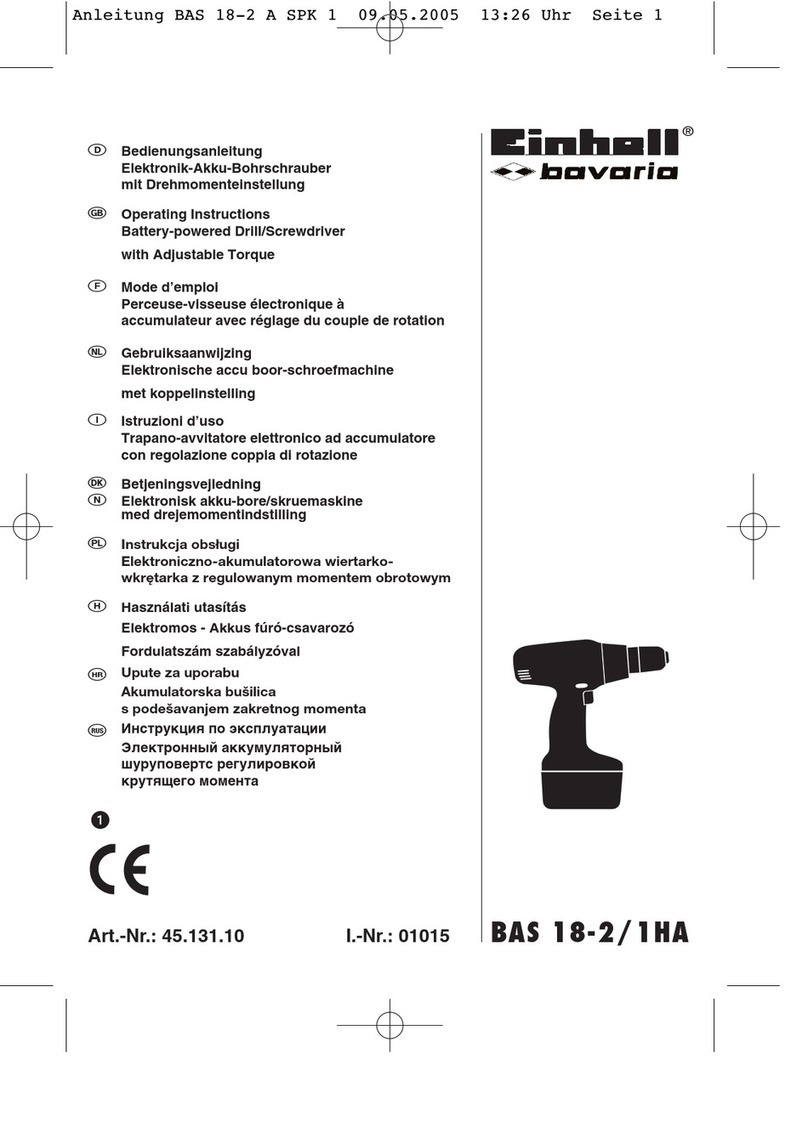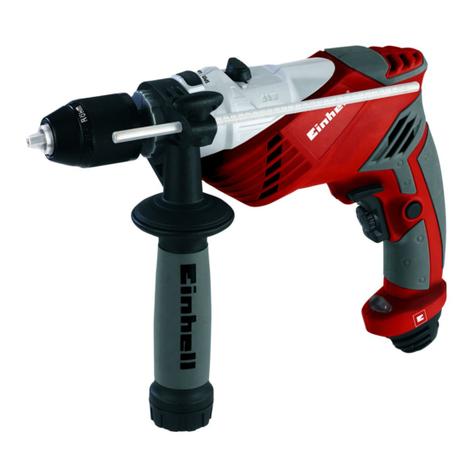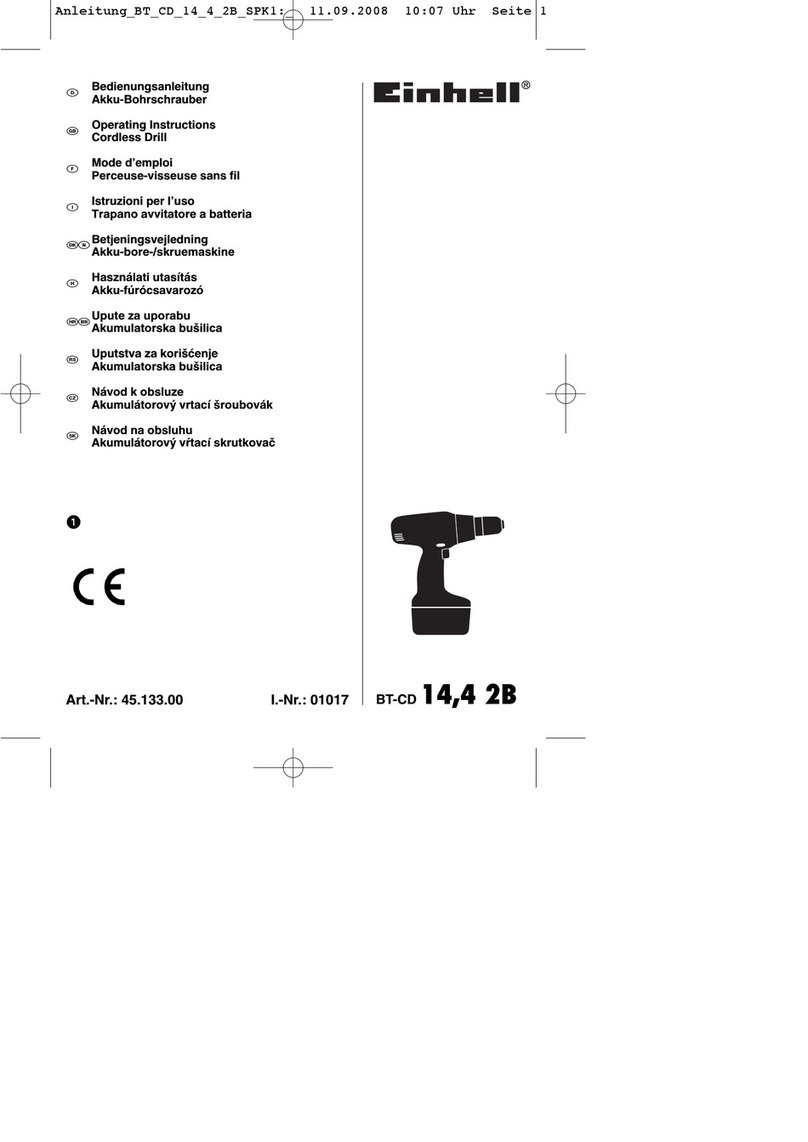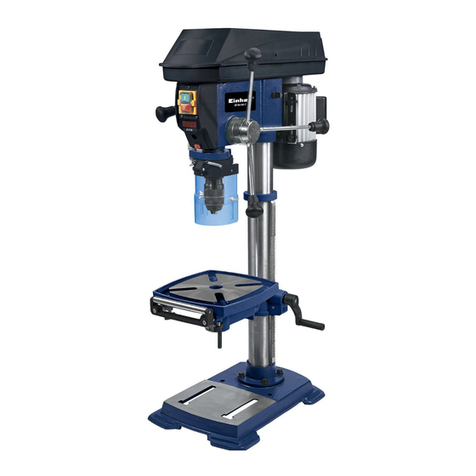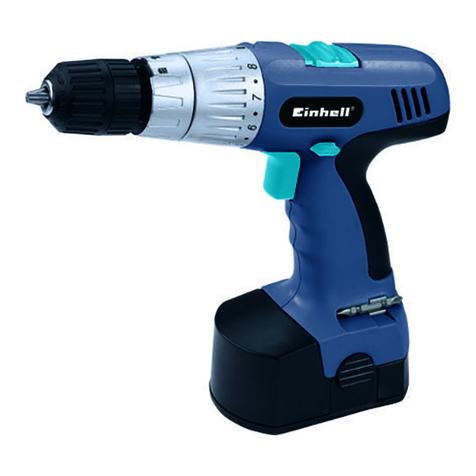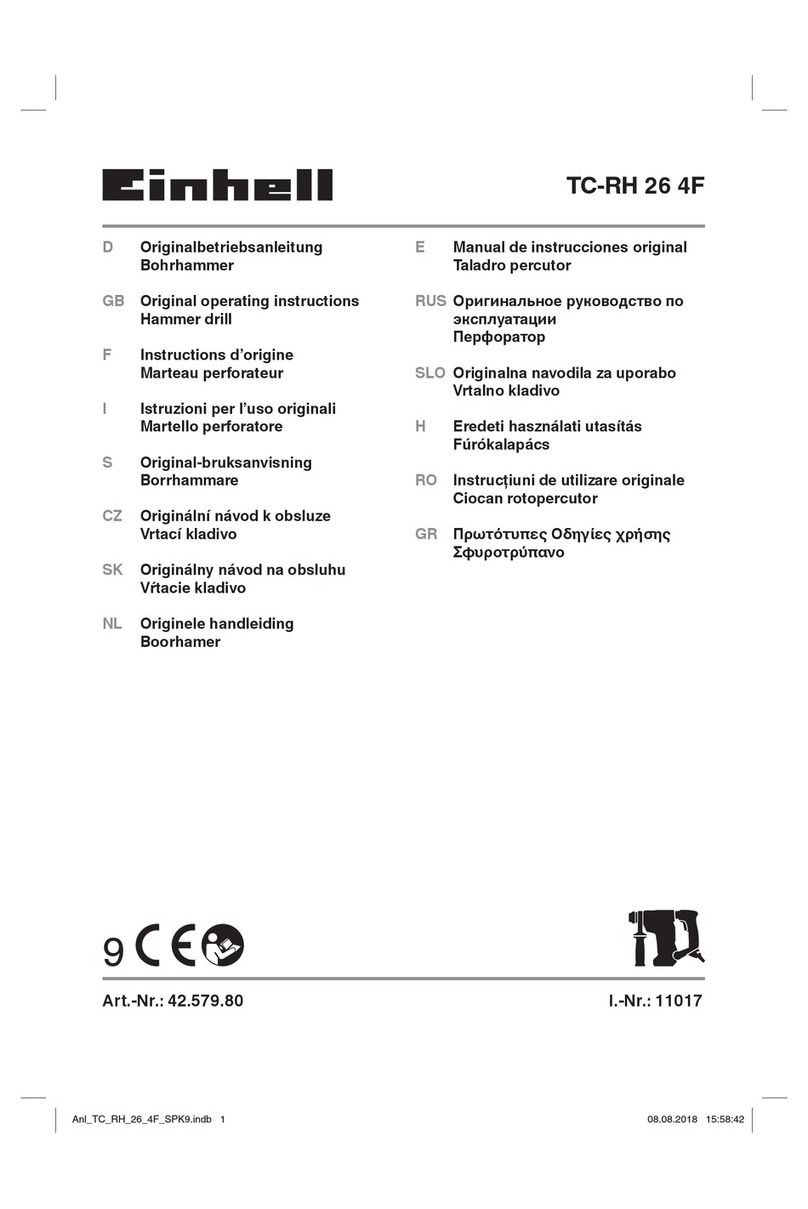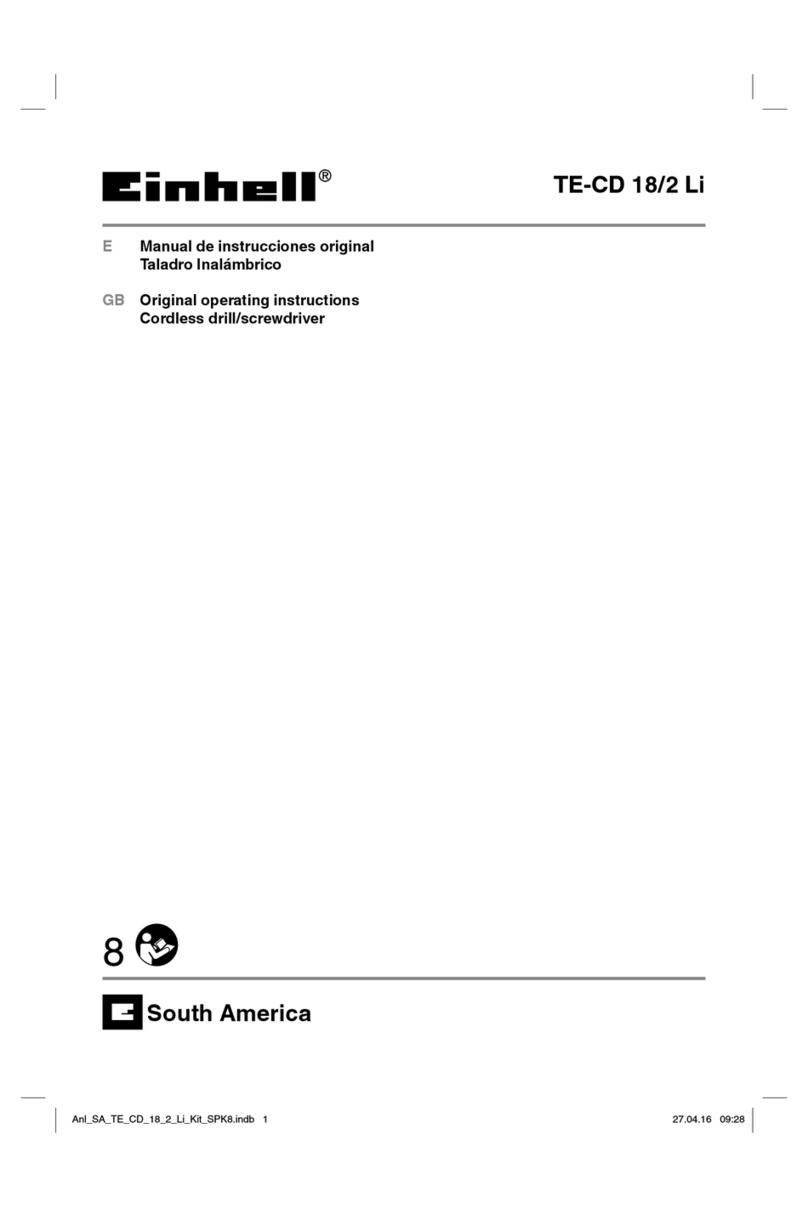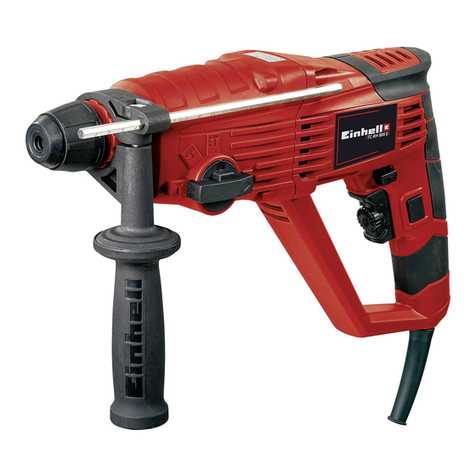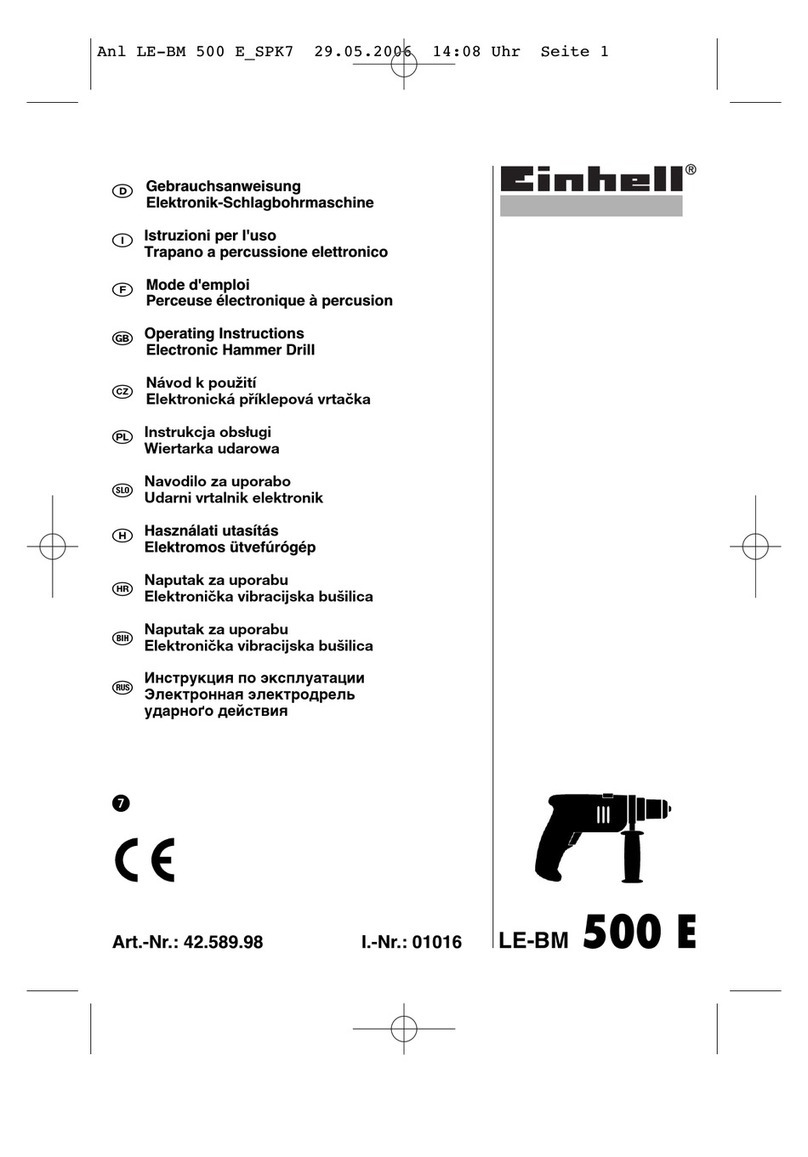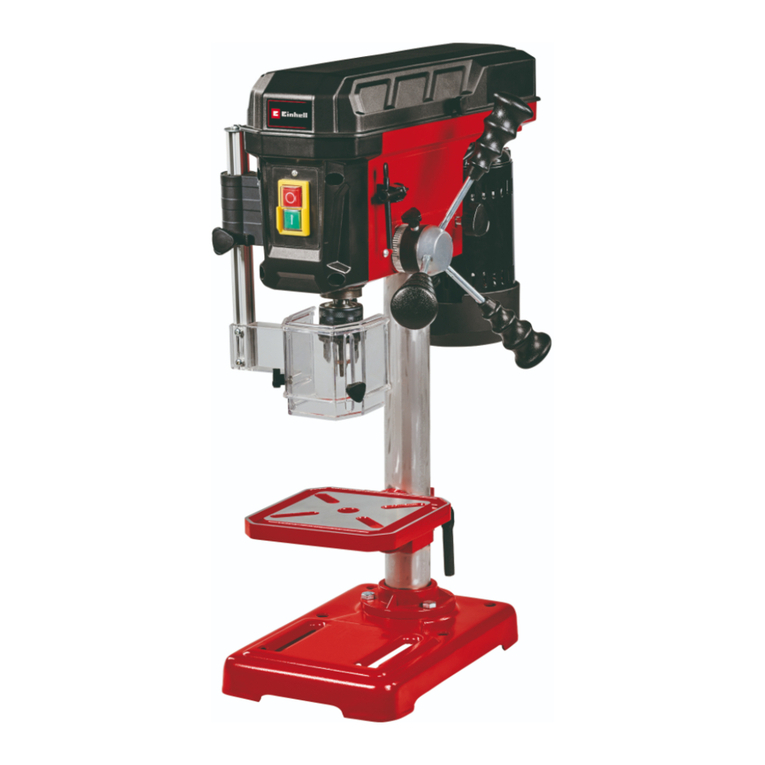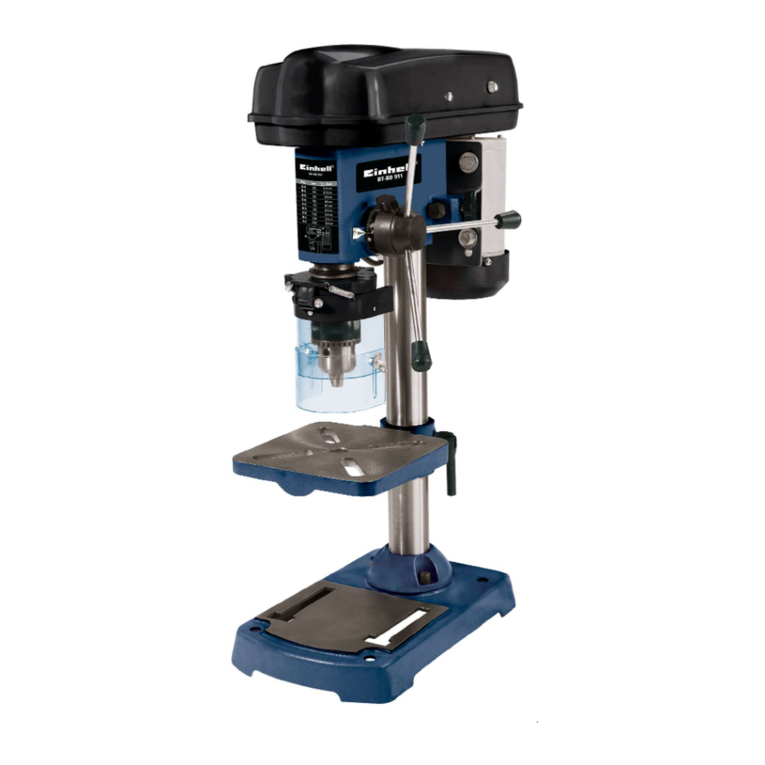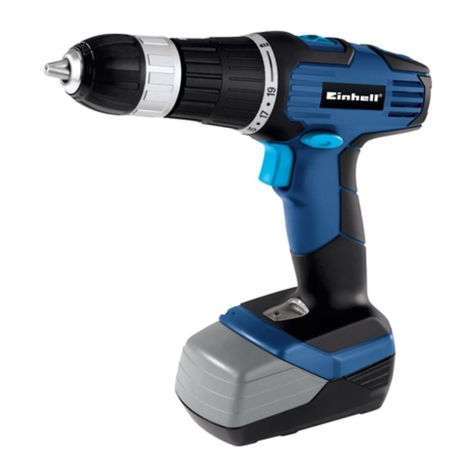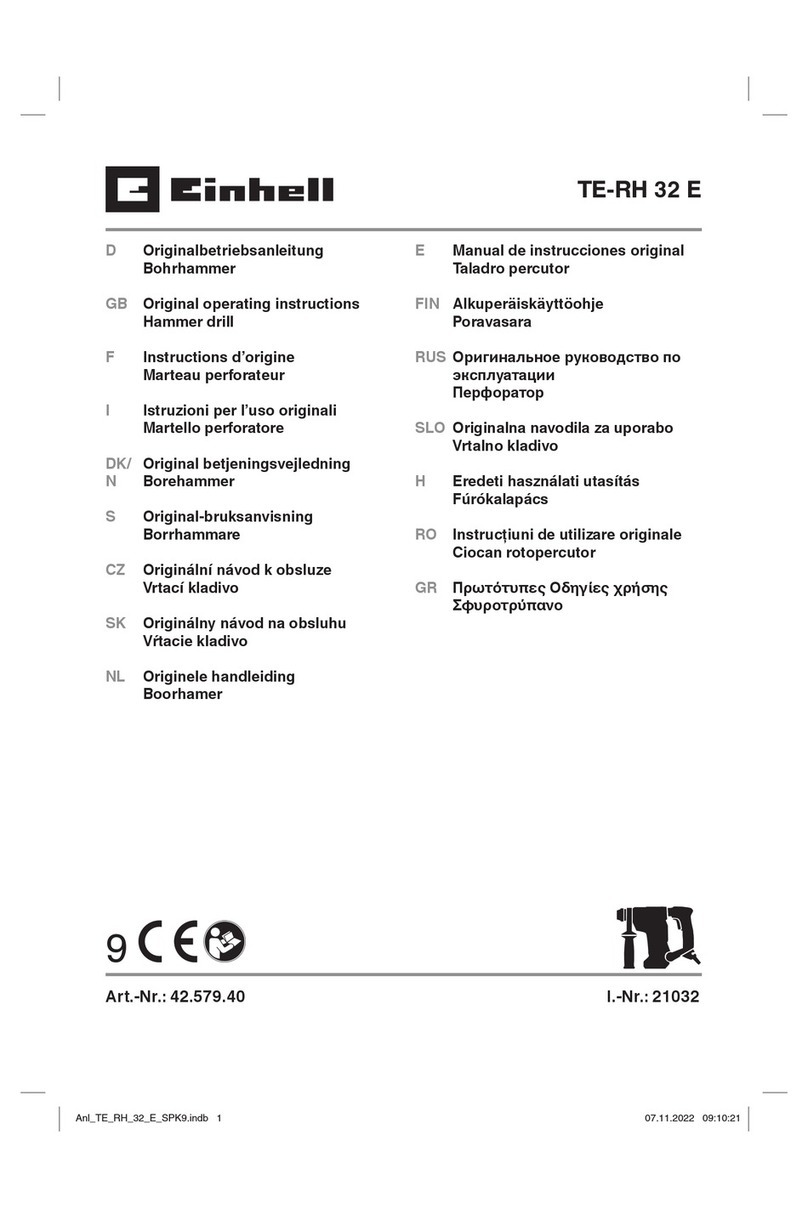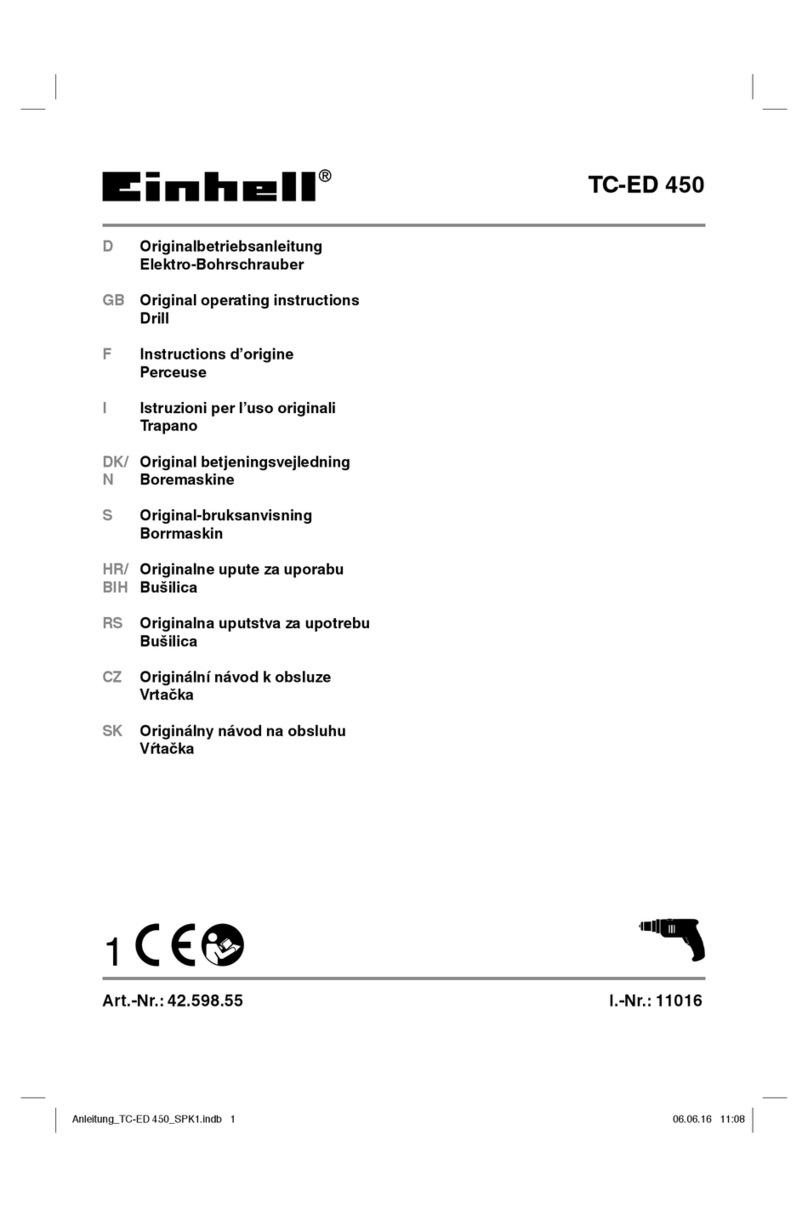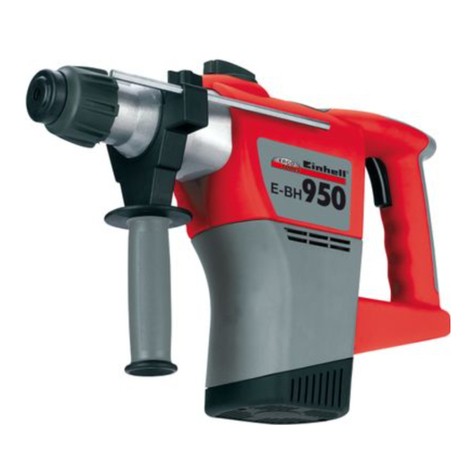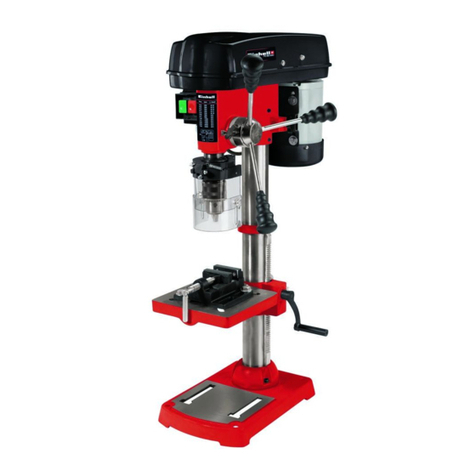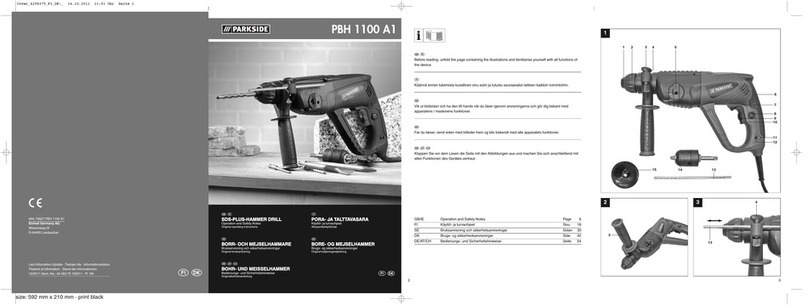GB
7
Danger!
Sound and vibration
Sound and vibration values were measured in
accordance with EN 60745.
LpA sound pressure level 90 dB(A)
KpA uncertainty 3 dB
LWA sound power level 101 dB(A)
KWA uncertainty 3 dB
Wear ear-muffs.
The impact of noise can cause damage to hearing.
Total vibration values (vector sum of three directions)
determined in accordance with EN 60745.
Hammer drilling in concrete
Vibration emission value ah= 12.0 m/s2
K uncertainty = 1.5 m/s2
Drilling in metal
Vibration emission value ah= 7.9 m/s2
K uncertainty = 1.5 m/s2
The specified vibration value was established in
accordance with a standardized testing method. It
may change according to how the electric equipment
is used and may exceed the specified value in
exceptional circumstances.
The specified vibration value can be used to compare
the equipment with other electric power tools.
The specified vibration value can be used for initial
assessment of a harmful effect.
Keep the noise emissions and vibrations to a
minimum.
nOnly use appliances which are in perfect working
order.
nService and clean the appliance regularly.
nAdapt your working style to suit the appliance.
nDo not overload the appliance.
nHave the appliance serviced whenever
necessary.
nSwitch the appliance off when it is not in use.
nWear protective gloves.
Danger!
Residual risks
Even if you use this electric power tool in
accordance with instructions, certain residual
risks cannot be rules out. The following hazards
may arise in connection with the equipment’s
construction and layout:
1. Lung damage if no suitable protective dust mask
is used.
2. Damage to hearing if no suitable ear protection is
used.
3. Health damage caused by hand-arm vibrations if
the equipment is used over a prolonged period or
is not properly guided and maintained.
4. Sight damage if no suitable safety googles or
facial protection are used.
6. Before starting the equipment
Before you connect the equipment to the mains
supply make sure that the data on the rating plate
are identical to the mains data.
Warning!
Always pull the power plug before making
adjustments to the equipment.
6.1. Fitting the additional handle (Fig. 2-3/Item 8)
The additional handle (8) enables you to achieve
better stability whilst using the impact drill. Do not
use the tool without the additional handle.
The additional handle (8) is secured to the impact
drill by a clamp. Turning the handle clockwise
tightens this clamp. Turning it anti-clockwise will
loosen or release the clamp.
nThe supplied additional handle (8) must first be
fitted. To do this, the clamp must be opened by
turning the handle until it is loosen enough for
the additional handle to be slid over the chuck (1)
onto the shoulder of the impact drill.
nAfter you have positioned the additional handle
(8), turn it to the most comfortable working
position for you.
nNow tighten the handle clockwise until the
additional handle is secure.
nThe additional handle (8) is suitable for both left-
handed and right-handed users.
6.2 Fitting and adjusting the depth stop
(Fig. 4/Item 2)
The depth stop (2) is held in place by the additional
handle (8) by clamping. The clamp can be released
and tightened by turning the handle.
nRelease the clamp and fit the depth stop (2) in
the recess provided for it in the additional handle.
